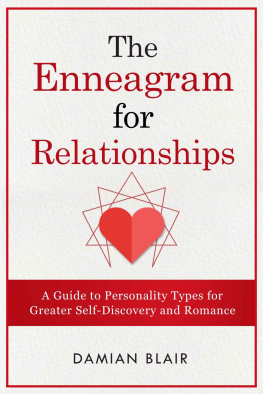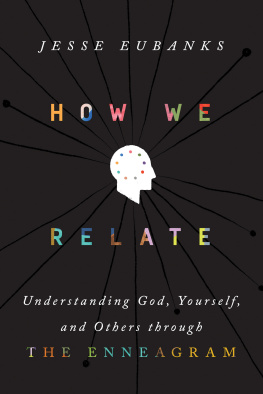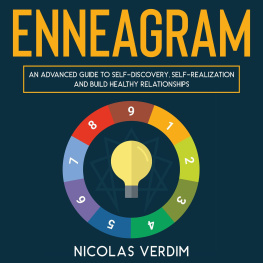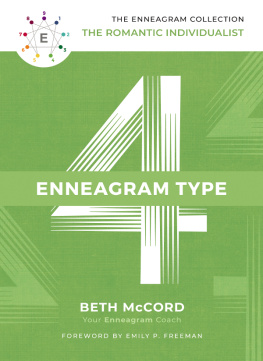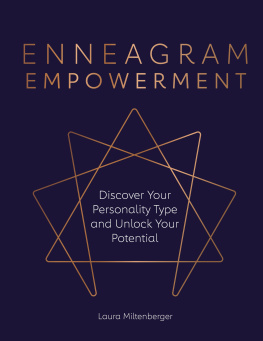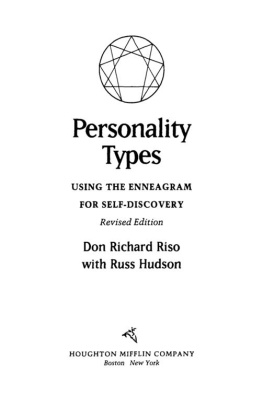The Enneagram For Relationships
A Guide to Personality Types for Greater Self Discovery and Romance
By
Damian Blair
DISCLAIMER
No part of this publication may be reproduced, stored in a retrieval system or transmitted in any form or by any means, electronic, mechanical, photocopying, recording, scanning or otherwise except as permitted under Sections 107 or 108 of the 1976 United States Copyright Act, without the prior written permission of the publisher.
While every precaution has been taken in the preparation of this book, the publisher assumes no responsibility for errors or omissions, or for damages resulting from the use of the information contained herein.
This book is for entertainment and informational purposes only. The views expressed are those of the author alone and should not be taken as expert instruction or commands. The reader is responsible for his or her own actions. Neither the author nor the publisher assumes any responsibility or liability whatsoever on behalf of the purchaser or reader of these materials. The reader is responsible for their own use of any products or methods mentioned in this publication.
This book includes information about products and equipment offered by third parties. As such, the author does not assume responsibility or liability for any third party products or opinions. Third party product manufacturers have not sanctioned this book, nor does the author receive any compensation from said manufacturers for sharing information regarding their products.
The Enneagram For Relationships
First edition. January 7, 2021.
Copyright 2021 Damian Blair
INTRODUCTION
When most people begin looking into the Enneagram and experimenting with how it can help them, they normally go straight to working on themselves. They may address their own weaknesses, shortcomings, or negative patterns of thinking and behavior. This is only natural. People tend to be more interested in themselves and their own personalities, how they think and view the world, and what makes them tick as a unique, individual person. Discovering your Enneagram type can have a very positive effect on a person, both for how they understand themselves, but also in what it reveals about how they relate to other people. Certain personalities complement each other in very positive and beneficial ways while others might more easily come to heads. Whatever the personality type, communication is the bedrock of any relationship, romantic or otherwise. Good communication can make it work whereas bad communication can destroy even those relationships that had such promising starts.
The Enneagram can give insight into what motivates each type, their particular triggers and irritations, and what to both build up and avoid in order to maintain a healthy relationship. For example, some types need very clear and straightforward communication while others are more comfortable with ambiguity. We will look at what each type needs when it comes to communication, how they can ask for what they want, and how they can affirm their own needs. Every Enneagram type is unique, and every type brings its own strengths, weaknesses, communication styles, and strange little idiosyncrasies to a relationship.
This book is not an introduction to the Enneagram, and it does not assume that the reader is a complete novice in the subject area. While some vocabulary and concepts will be reviewed briefly toward the beginning, they will not be discussed in any great detail. In the preface, we will briefly review the Enneagram itself: how it works, the levels of development in health and the directions of integration and disintegration, a short recap of each of the nine types, how the wings work and can influence a basic type, and a quick review on finding or confirming your own Enneagram type.
In Part I of this book, we will review each of the nine Enneagram types in more detail. While the basics were previously covered in The Enneagram Beginners Guide , these chapters will delve deeper into several more comprehensive topics when it comes to the personality types and how they interact with others. We will look at the levels of development, or how each type integrates into health or disintegrates when they find themselves descending into stress. We will also look at how each type prefers to communicate, the degrees of intimacy with which they are comfortable, common types they mistake themselves for when deciphering their basic number, the nuances that either of the dominant wings can give to each type, and how to be accepting and affirming of each number. How to interact and communicate with each of the types can be especially helpful for those in a relationship to be aware of when it comes to how their partners personality is structured.
In Part II, we will look at all of the possible pairings within the Enneagram. Each relationship is unique, but certain broad outlines can be drawn when looking at all of the basic types. How do Nines and Sevens interact in a relationship? How would a Three best communicate with a One? What type of communication style should a Four avoid when in a relationship with an Eight? And which should be embraced? Eliminating all conflict is an unattainable endeavor, but certain conflicts, altercations, and arguments can be avoided if partners are aware of what should be avoided with a particular Enneagram type. If you are aware of what might trigger your partner, and they are also aware of what might trigger you, then a good amount of negativity, disagreements, and resentment can be averted. This is especially true of things that can be triggering to a certain Enneagram type which someone else might have been completely unaware of. We will also look at the particular strengths of each type and how they can complement their partners. Conversely, we will also look at the areas each type needs to work on in order to improve themselves and their interpersonal relationships.
This book assumes that you already have a comfortable familiarity with the Enneagram, how it works, and the basics of what each of the nine personality types encompass. This is not an introductory book where all of the vocabulary, terminology, and elementary concepts are discussed apart from a concise review in the preface. This book is more concerned with how the Enneagram types interact with each other in the context of a romantic relationship. It is meant to help couples build a relationship and complement each others strengths and weaknesses in constructive and beneficial ways. This is not a dating guide, nor is it an outline offering advice as to how to go about finding your ideal partner or perfect match based on which Enneagram type might theoretically be best for you.
The advice offered within these pages is not intended to be used to manipulate your partner in any way. When triggers are outlined for each type, they are meant to be avoided within the context of a healthy relationship. You should want the best for your partner, and they should want the best for you in return. The purpose of this book is to build, enhance, and solidify any romantic relationship in which you have taken part in order to create a more fulfilling connection. This in turn can ensure that you and your partner will have a better chance at a long and happy relationship.
I am a Two on the Enneagram, and my wife is a Seven; The Helper and The Enthusiast, respectively. Both of our types can have very different reactions to the same situation, as well as our own distinct feelings and emotional responses. In our relationship, we can both benefit from each others weaknesses. She and I have to learn on our own how we best communicate, and then learn how to interact in the healthiest way with each other. For example, Twos such as myself can sometimes feel self-conscious and inhibited due to our core motivation of shame, but my Seven wife supports me with her outgoing attitude and endless pursuit of the next great adventure in life. In return, I can use my Two strengths to help her feel comfortable expressing her full range of emotions which she may have difficulty with doing on her own. Sevens are often uncomfortable with the less positive aspects of life, and Twos have the ability to put them at ease and feel both physically and emotionally safe. Each number on the Enneagram needs to talk through what they need from their partner, why they need it, and how they can work towards fulfilling each others personal needs.
Next page
